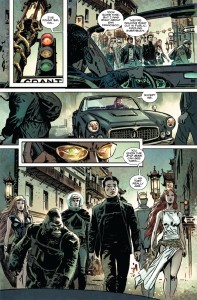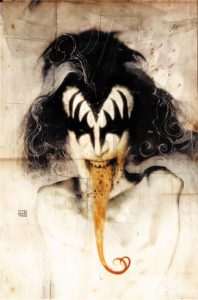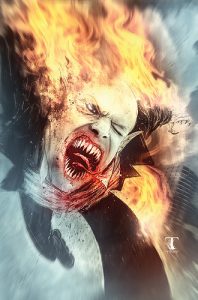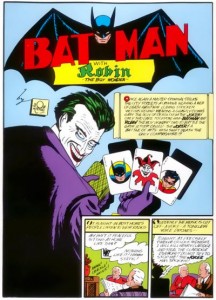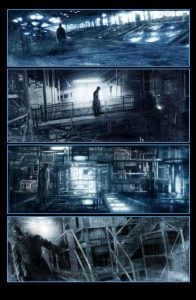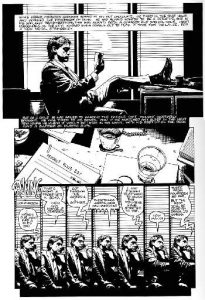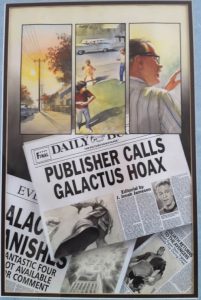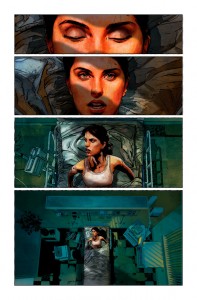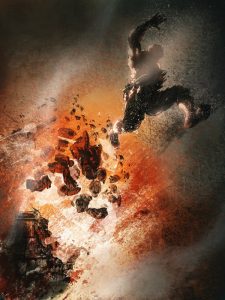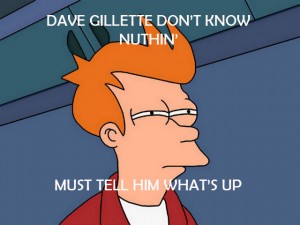
In last week’s installment of Comic Revolt, I looked at ten influential and amazing artists that have changed the face of comics with their exceptional style and ability to tell a story. This week we look at ten more using the following guidelines.
Since there is an incredible number of artists that have or continue to amaze readers with their amazing ability to tell a story through sequential art, this is limited to twenty total artists with this part being the final installment. Also in this installment, I’m looking at a few artists who haven’t seen their proper due in my opinion.
Popularity will not win the day on this either. There are a number of artists out there that are not known by the mainstream, but have influenced some of the big time artists that have sold the big numbers. To be clear, this is not a ranked list — it’s a spotlight on artists according to my humble opinion. Sit back, and let’s have some fun with this.
His work offers outstanding line work and detail that is rich and gives every character or scene that visual pop that makes things come off the pages. A student of sequential art, Hardman knows how to tell a story visually in a way that is seamless and fills in the gaps of the reader’s mind.
Consider this work from Agents of Atlas. The perspectives and flow of story are cinematic in scope and feel. His work as a storyboard artist comes out in his style, which is distinct and has considerable substance. Each panel flows together in a liquid manner that moves your eye through the page with ease.
His work on iconic characters like the Hulk and Batman sits with the best in the business too. Hardman’s style has an otherworldly quality that brings the fantasy world of his work one step closer to reality.
He occupies that fine line between impressionist style and realism. Wood’s artwork has graced the pages of many stories, covers, and canvasses over the years because of his supernatural ability to depict the boundaries between concrete and abstract.
I find that the inner soul of his work is a very dark abyss that stares back into you with a coldness that makes the hair on your neck stand up. There’s a lot going on in each piece of work that he does, even the more commercial stuff like Metal Gear Solid.
Heavily in demand between the film, comic, and art world, Wood continues to evolve as an artist and bring new images and ideas to the table. Some of his best work focuses on singular images like this really cool Gene Simmons Kiss work.
How many ways can I express my love for Templesmith’s artwork? Numerous, but the talented man from Australia continually blows my mind with his inventiveness and ability to see things in a different light than the average artist.
Whether it’s been his amazing work on 30 Days of Night with Steve Niles, or Choker, he has this amazing quality of being able to amuse and terrify all in the same space. It’s as if his work is the embodiment of dark humor.
Perhaps it’s his own funny sense of humor that is married somehow to his artistic sensibilities, but there is some Dadaist qualities in what he comes up with that give him a certain freshness that never goes out of style.
While it’s not fully clear who created the Joker, Robinson is credited as the likely creator of the iconic villain. He was also a superior artist to Bob Kane and took over duties for Batman when Kane started focusing on the Batman comic strip.
His memorable work took the title to new places, making for some of the best visual storytelling of the time. Characters like Alfred Pennyworth and Two-Face made their debuts while Robinson worked with Kane and sowed the seeds for generations of artists to come.
It’s of considerable note that Robinson was an outspoken advocate of creator’s rights and staunch supporter of Siegel and Shuster in their plight with DC Comics. His boldness also translated into his body of work.
This Northlander continues to amaze with his virtuosity in many styles ranging from some of the best Judge Dredd stories to his new venture with Madefire motion comics. Well respected by his peers in the business, his early work had a strong physicality and presence.
He also has a sense of humor with his work that is prevalent in the way he parodies the big bodied, muscle man super heroes of the early 1990s that never takes itself too seriously. This is especially prevalent in his latest title Captain Stone is Missing…
Textures and character best summarize the essence of work that’s layered and nuanced, showing considerable depth and range within his art. On top of that, he’s a highly gifted colorist that rivals any of the top colorist I have seen.
He has perfected the art of photo reference to the point that he could draw the photo too. Bradstreet takes days to do some of his work because of how ridiculously detailed and complex it is.
His preference is to work in black and white, shaping the details of each character or background and making brilliant use of negative space. My favorite works by Bradstreet come from his Hellblazer and Punisher covers.
While it doesn’t happen often, Bradstreet does do sequential stories, showing off his ability to capture the progression of a scene with the precision of a camera lens. It’s that and his amazing pencil work that make him one of the top artists in the industry.
He’s another artist that is able to capture a photo realism in his subjects, but he uses slightly different tools of the trade. More of a Michelangelo than Bob Gruen (the iconic John Lennon photographer), Ross changed the game for comics with Marvels.
The perspective and brilliance of each subsequent work he did only raised the medium of comics to new levels of brilliance, especially Kingdom Come. There really is no one in comics quite like Ross.
This piece from Marvels really captures the essence of his ability to tell a story while demonstrating his fine detail and world-class artistry.
His work on Batman in the 1970s changed the title into a more kinetic and grittier title than before. Unlike any American comic book artists before him, Adams had a sleek and sinewy style that was elegant and muscular.
In many ways, he was the catalyst for a new kind of artist that wanted to make super heroes bigger and tougher than before. What separated him from his many imitators was his tasteful restraint.
Characters would get hideously bigger and develop all sorts of muscles that aren’t even part of the human anatomy, but Adams always retained the naturalist aspect of his characters, finding the inner hero without making them look like a caricature or parody of the form.
Another master of using photo reference, Maleev separates himself by throwing a little dirt on the lens and making a grittier, earthier style that captures his characters in a halcyon like state. His work on Daredevil is beyond amazing, capturing the man without fear in the that primal backdrop of Hell’s Kitchen.
He also took a character that was mediocre at best in Spider-Woman and made her much more interesting with the deep, brooding depictions of her from the run he did with Brian Michael Bendis. The colors, done by him, are beyond amazing and add so much depth to the work.
I’m not sure how many artists do their own colors, but I think that number is small. Maleev is right up there with Bettie Breitweiser for his amazing eye for color, which really helps bring his artistic vision to a place of purity.
He’s sort of the new kid on the block, but he’s not. Having spent the majority of his time as an artist in the world of advertising and marketing, Wolestenholme is a newcomer to comic books.
For being new, he’s made a stunning debut with his work on the Madefire motion comic Mono. There are many panels in that title that make you wonder how much time he spent on the art because of the incredible detail and depth.
His original print for a special panoramic panel in the first Mono story literally takes up a space of roughly 2X6′. His dedication to the craft and purity of vision is staggering. He’s definitely worth keeping an eye on because each panel he draws is like a mini masterpiece.
Check back with Comic Revolt next week as we continue exploring the new, unusual and innovative. And don’t forget to keep the conversation going. I want to hear from you! Leave comments below or tweet me at @DavidGillette1 to talk about your favorite artists.


